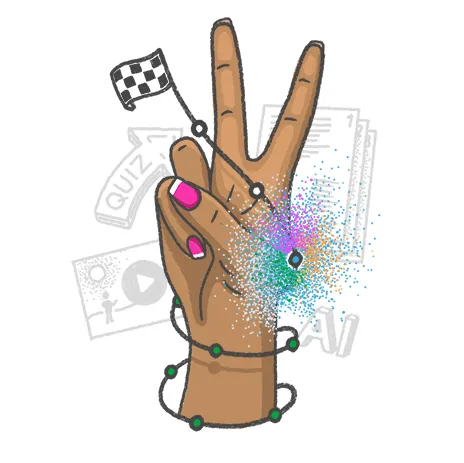Partner onboarding best practices
1. Map the partner onboarding process
A clear and structured plan is the foundation of effective partner onboarding. Visualizing the process from start to finish provides transparency, builds trust, and ensures that both sides know what to expect.
2. Create an engaging introduction
A personal introduction sets the tone for the relationship. This can include:
- A short introductory video that presents your company and culture.
- A welcome message from the team or manager.
- A clear onboarding plan with goals and milestones.
These steps create a sense of belonging and help new partners feel part of the organization from day one.
3. Gather feedback to improve the process
Successful partner onboarding is never static. Collecting input from existing partners and employees ensures the process remains relevant, effective, and continuously improving. Feedback surveys, interviews, and onboarding reviews can highlight both strengths and areas for improvement.
4. Set clear expectations early
Misaligned expectations often lead to frustration. Communicate clearly what is expected of new partners, how they can contribute, and what success looks like. This shared understanding helps build confidence and direction from the start.
5. Communicate regularly to build trust
Effective onboarding requires more than just an initial kickoff. Regular communication throughout the process helps maintain engagement, build trust, and ensure all parties stay aligned. Scheduled check-ins, progress updates, and open communication channels all play an important role.
6. Define a clear vision for collaboration
A shared vision ensures that everyone understands the long-term objectives. Break down goals into manageable steps to prevent overload and keep the onboarding process achievable. This clarity strengthens the foundation for a long-term, successful partnership.
Automated partner onboarding
Manual onboarding is time-consuming and prone to mistakes. Automated partner onboarding tools streamline repetitive tasks while enhancing the partner experience. Here are some examples:
- Automated welcome messages → Ensure every new partner receives consistent information and next steps immediately.
- Preboarding materials → Share videos, company overviews, and required documents before the partnership formally begins.
- Reminders & follow-ups → Automate task deadlines, training schedules, and form submissions to prevent missed steps.
- Feedback loops → Trigger automatic surveys post-onboarding to collect partner insights.
- Calendar integration → Sync meetings, trainings, and deadlines directly into partner calendars.
- Certificates & recognition → Automatically issue certificates or diplomas upon successful completion.
- Continuous training → Enroll partners into role-specific courses over time to ensure ongoing development.
By automating these tasks, companies reduce administrative work, improve consistency, and free up time to focus on strategic relationship building.






.webp)



.webp)








